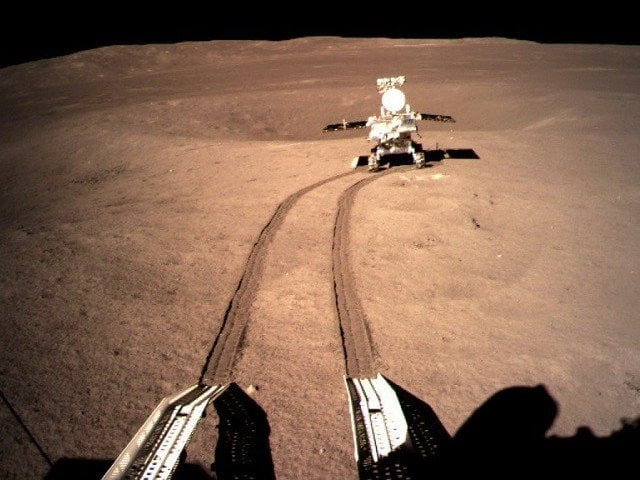
First time for humankind: A seed taken up to #Moon by China's Chang'e-4 probe has sprouted #ChangE4 pic.twitter.com/N6fA3A4ycv
— China Xinhua News (@XHNews) January 15, 2019
The cottonseed sprouts became the first biological matter to grow on the moon and according to the probe’s biological chief designer, the plant laid the foundation for a lunar base and long-term space exploration program. The cost of taking the plant into the moon was roughly estimated at 10 million yuan (£1.15million).
US regulator approves SpaceX plan for broadband satellite services
The Chang’e-4 lunar probe landed on January 3 and transmitted the first-ever “close range” image of the far side of the moon. China’s National Space Administration applauded the launch as a first that “lifted the mysterious veil” of the far side of the moon and claimed it as a major achievement for the country’s ambitious space program.
The plant was relying on sunlight at the surface of the moon but could not make it as temperatures dropped as low as -170°C during darkness.
Night on Moon lasts for almost two weeks after which the probe would wake up again having witnessed its first lunar night since the probe landed.
“Life in the canister would not survive the lunar night,” said Prof Xie Gengxin of Chongqing University who was leading the design of the experiment.
NASA wants people on Mars within 25 years
The Chang’e-4 probe’s rover Yutu-2 was also put to a “midday nap” to avoid overheating when the sun was directly overhead and temperatures could be controlled.
According to The Guardian, fruit fly eggs were also placed in the canister with cottonseed. Scientists hope to create a micro-ecosystem where the plants would provide oxygen to the fruit flies which would then produce carbon dioxide required for photosynthesis. No confirmations were made by the space agency whether the eggs hatched or not.
This article originally appeared on The Guardian.






1726054615-0/OpenAI-(2)1726054615-0-270x192.webp)











COMMENTS
Comments are moderated and generally will be posted if they are on-topic and not abusive.
For more information, please see our Comments FAQ